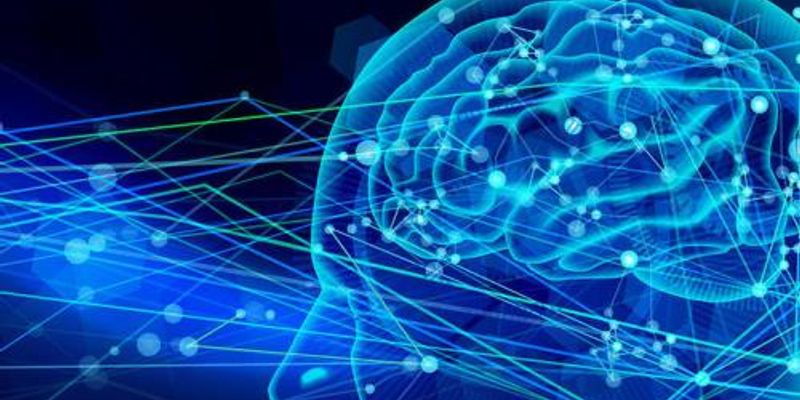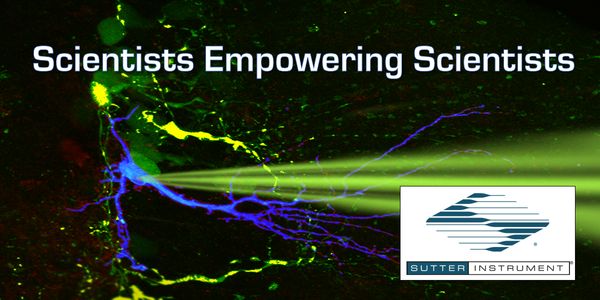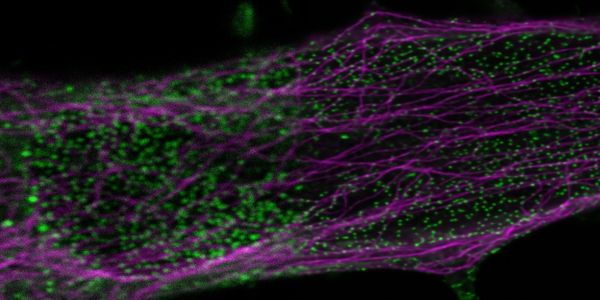Computational Model
Computational Model: is a mathematical model in computational science that requires extensive computational resources to study the behavior of a complex system by computer simulation. The system under study is often a complex nonlinear system for which simple, intuitive analytical solutions are not readily available.
-
Speech neuroprostheses have the potential to restore communication to people living with paralysis, but naturalistic speed and expressivity are elusive. Here we use high-density surface reco...
FEB 08, 2024 | 10:00 AM
High-content screening (HCS) is an imaging-based, multi-parametric strategy used in drug development that generates rich datasets through multiplexing strategically chosen fluorescent dyes a...
MAR 30, 2023 | 8:00 AM
Date: March 30, 2023 Time: 8:00am (PST), 11:00am (EST), 5:00pm (CET) Join the Gibco Cell Culture Heroes webinar featuring Heather Beasley, PhD as she presents "SLC25A46 as a Novel Mitoc...
In this talk, we will discuss the nuts and bolts of the novel continuous-time neural network models: Liquid Time-Constant Networks (LTCs). Liquid neural networks are nonlinear state-space mo...
Speaker:
Mathias Lechner, PhD
, Ramin Hasani, PhD
Presented at: Neuroscience Virtual Event Series 2023
JAN 25, 2023 | 10:00 AM
Date: January 25, 2023 Time: 10:00am (PST), 1:00pm (EST), 7:00pm (CET) The field of proteomics is poised for a single-molecule revolution – enabling more comprehensive analysis of the...
DEC 08, 2022 | 10:00 AM
Date: November 08, 2022 Time: 9:00am (PST), 12:00pm (EST), 6:00pm (CET) In this webinar, scientists from Araceli Biosciences examine how high content screening (HCS) needs have changed in th...
Date: December 06, 2022 Time: 8:00am (PST), 11:00pm (EST), 5:00pm (CET) Scientist must look beyond studying individual proteins and examine the structure and assembly of protein complexes wi...
Speaker:
Pascal Albanese, PhD
, Edward Pryor, PhD
, Albert Konijnenberg, PhD
, JOINING FOR Q&A: Rosa Viner, PhD
Presented at: Thermo Fisher Scientific - Electron Microscopy Webinars
Sponsored By: Thermo Fisher Scientific
Sponsored By: Thermo Fisher Scientific
JUN 28, 2022 | 7:00 AM
Date: June 07, 2022 Time: 7:00am (PDT), 10:00am (EDT), 4:00pm (CEST) Predictive Genomics (PG) is a powerful capability to help predict disease risk and understand drug responses to improve h...
JUN 21, 2022 | 10:00 AM
Date: June 21, 2022 Time: 10:00am (PST), 1:00pm (EST), 7:00pm (CEST) The proteome is perhaps the most dynamic and valuable source of functional biological insight. Here, we introduce a novel...
JUN 16, 2022 | 8:00 AM
Date: June 16, 2022 Time: 8:00am (PDT), 11:00pm (EDT), 5:00pm (CEST) Many researchers combine electrophysiological recordings with imaging applications, where a light source with high light...
JUN 01, 2022 | 10:00 AM
Date: June 1, 2022 Time: 10:00am (PDT), 1:00pm (EDT), 7:00pm (CEST) The AI Microscopy Symposium, offers an unique forum for presenting and discussing the latest AI-based technologies and too...
Speaker:
Yicong Wu
, Vijay Rajagopal
, Afshin Khadangi
, Parmida Ghahremani
Sponsored By: Leica Microsystems
Sex differences play an important role in development and progression of many diseases, and understanding how a disease differs between the sexes is essential for the advancement of preventi...
Behavior in complex environments requires decisions that flexibly combine stimulus representations with context, goals, and memory. Two key aspects of such cognitive flexibility are the retr...
Neuroscience is experiencing an exciting era of integrating novel materials and tools to record neural activity made possible through significant advances in materials science, electrical en...
In this session we will use a set of reads enriched for viral sequences and sequences from wastewater treatment plants. Specifically the aim is to assemble whole SARS-CoV-2 genomes from such...
Computational or mathematical modeling generally refers to a mechanism-based formalism that help us test hypotheses, expand our understanding of a system, or make mechanism-aware predictions...
























